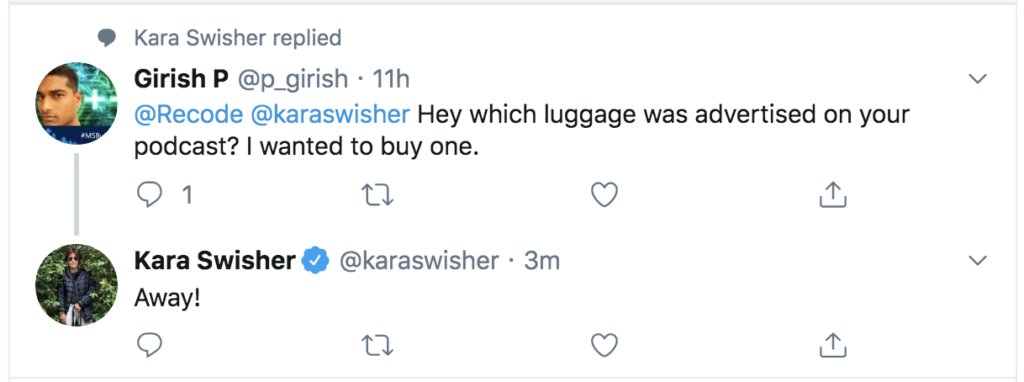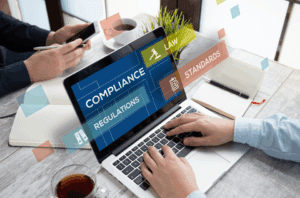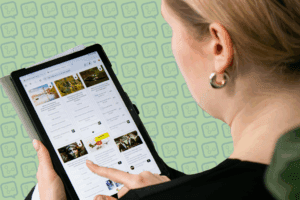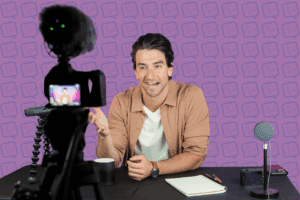Podcast Advertising: The Ultimate Guide
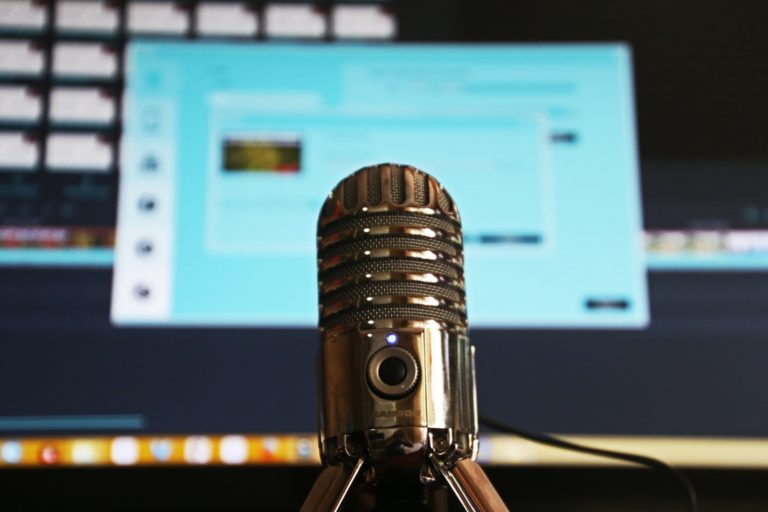
Marketers are terrible at keeping secrets! Give us a new growth channel and we’ll be writing about it in LinkedIn articles and Slack groups within hours. It’s no surprise that the secret is out about podcast advertising being a highly effective way of reaching audiences at scale and driving new customer acquisition.
If you are new to podcast advertising, don’t worry. You are not too late to the dance. There are plenty of opportunities for growth marketers to be successful with the channel. By following this guide, you’ll go from rookie to pro through the understanding of important podcast terminology, how to measure success in podcast advertising, and by avoiding the mistakes we have seen several beginners make.
What is podcast advertising?
Podcast advertising involves an influential show host, think Joe Rogan or Bethenny Frankel, reading a branded advertisement to his or her audience at the beginning, middle or end of the podcast episode. Podcast advertising can be thought of as equal parts radio advertising and equal parts influencer marketing. Like radio ads, podcast ads are delivered audibly and are generally consumed on platforms like Spotify, Apple Podcast, Stitcher, etc. Unlike radio, podcast ads are generally delivered by the host of the show. In this way, podcast advertising more closely resembles influencer marketing, in which a trusted online persona publicly endorses a product or service to his or her audience in exchange for compensation.
Listen to the first 2 minutes of this podcast episode to hear an example of what a podcast ad read sounds like:
Am I sponsoring the whole podcast or just parts of it? What types of podcast advertising exist?
What typically works most successfully is a brief 60 second ad spot in the podcast. There are three different types of these ad spots: pre-rolls, mid-rolls and end-rolls. Pre-roll ads are delivered at the beginning of a show before the host gets into the main content. Mid-rolls are integrated somewhere in the middle of the content and are harder for listeners to skip over. Lastly end-rolls are at the very end of a podcast after the content is finished.
These ads can be delivered two different ways: (1) programmatically through “dynamic ad insertions” or (2) directly in the podcast content file, which is considered “evergreen” because it lives in the file forever. In contrast, a dynamic ad insertion is delivered programmatically and can be filled by any number of potential sponsors through the lifespan of the podcast episode’s life.
How do I find a podcast to sponsor?
The best free resource for finding podcasts to sponsor is listennotes.com. Listennotes allows you to enter in specific keywords relevant to your brand and will provide you with podcasts that have mentioned those terms in their channel name, episodes or show notes. This manual work takes time, but it is the best way to find contextually relevant content to sponsor.
Alternatively, you can identify a podcast advertising agency, such as InfluenceLogic. We work with hundreds of podcasts and can help brands plug into an existing network of shows much faster than a single brand manager could on his or her own. In addition, InfluenceLogic can help make sure that your brand is aligned with the target audience of the podcast, to give you the best return on your investment.
When I find a podcast I want to sponsor, what do I ask?
Each deal you do with a podcaster is unique. However, there are some core questions you want to ask about their podcast channel before you can start to consider if it would be a good media buy. First you need to know the average number of downloads each episode gets. Be careful here. Some podcasters will share the number of downloads their entire podcast generates each month. Be sure you are receiving the number of downloads at an episode level. To standardize this question, you want to ask how many downloads an episode gets in the first thirty days.
Next, you need to learn about the audience demographics. It is common practice to ask the podcast host for a screenshot of their audience demographics to ensure they reach the same group of people you want to target your advertising towards. With audience demographics, you can learn more about the age, gender and location of a podcaster’s audience.
Lastly, you need to know what type of ad reads the host offers: pre, mid or end-rolls, and if they are evergreen or dynamic ad insertions. Mid-rolls are the most desirable because they are the hardest for the audience to skip over. Similarly evergreen ads are more favorable than dynamic ad insertions because dynamic ad insertions make it easy for the podcast host to remove the ad after a certain number of downloads have been achieved. An evergreen ad will live in the podcast file forever, continuing to accrue listens.
Pro Tip: Ask the podcaster which brands have been sponsoring his or her podcast the longest. If a brand continues to buy ad inventory from a host month over month, it is likely that advertiser is generating a positive return on investment.
How much should I pay for podcast advertising?
Prices vary greatly in podcast advertising. However, the standard unit we use for pricing is CPM, or cost per 1,000 listens. We have seen rates as low as $5 CPM and as high as $70 CPM for some of the most sought after podcast advertising inventory. Generally, $20 CPM is the going rate most hosts are comfortable charging. We recommend starting prodcast pricing negotiations around $20. It is a fair rate and it will never offend anyone, where offering $10 might offend a host.
Pro Tip: You can save a lot of money buying multiple sponsorships from the same host. To create a podcast ad, a host must spend time recording the ad read. If they can use that same ad read over and over again, they are making more money with less work than having to make multiple advertisements. Because of this ease of scale, hosts will be more likely to give you a reduced rate on episode 2, 3, etc.
How should I structure a buy with a podcaster?
At InfluenceLogic, we have had a lot of success starting small and standardizing how we engage with new publishers for the first time. With every new publisher, we negotiate a deal to buy three consecutive ads spots. The ad spots should all be the same: 60 seconds, evergreen, mid-roll ads that are host read. After the ads run, we wait two additional weeks. At that point we measure the return on ad spend (ROAS) at the publisher level. If customer acquisition cost (CAC) is on or below target, we double down on our investment and make longer-term buys with the respective publisher. It is a simple approach, and it is working for our clients.
Is it standard for a podcast to have multiple sponsors in one episode?
You may be surprised the first time you hear your podcast ad sandwiched in between two others. Don’t worry. Having multiple ads in a single podcast is standard. Podcast listeners have become comfortable with as many as three to nine ad reads in a single episode.
Pro tip: You may be tempted to offer a podcaster more money to be the exclusive sponsor of a podcast episode. Do not make this mistake. Instead focus on making your podcast ad stand out among the mix. You need to learn to work with the medium, which is built around podcast hosts having multiple ad reads in a single episode. You’ll spend too much time negotiating if you try to change how podcasters run their ad inventory.
How do I measure the performance of a podcast advertisement?
Measuring the performance of podcast advertising is tricky, but not impossible. Let’s run through an example: An individual listens to his favorite podcast on the drive to work. The host exclaims, “This episode was brought to you by [Company]. My listeners get 10% off by typing in code [podcast name] at checkout. Thanks for sponsoring this podcast. Now back to the show.” The likelihood the listener will remember the value proposition, website, and discount code by the time he gets home from work is minimal. However, he may remember the company name. He will likely get home from work hours later, Google search the company name, click the top search result, and purchase the product. In this scenario, the respective brand manager does not have any data indicating that the purchase was influenced by a podcast. The sales conversion is unattributable. Worse, the search marketing team might even take credit!
The easiest way to start measuring the performance of your podcast advertising is to use coupon codes. Listeners with high purchase intent will remember the associated coupon code and apply it at checkout, helping you better understand where sales are coming from.
If you get serious about podcast advertising, invest in attribution software. In our research, we have found Podsights to be our favorite podcast attribution and measurement solution. Among other insights, Podsights measures purchase conversions through a proprietary pixel tracking system, ultimately helping media buyers determine more accurate ROAS down to the episode level.
There are two pieces involved in a Podsights integration: an Analytics Prefix and a Pixel. The publishers who promote your brand install the Analytics Prefix on their hosting provider. Every time a user downloads an episode, the request goes to Podsights first, then to the audio file. This allows Podsights to record the user’s IP address and User Agent. It also allows Podsights to report real-time download numbers and is the basis of attribution. This data helps the media buyer calculate the true CPM of each publisher.
To measure ROAS, the Podsights pixel is a small piece of JavaScript that is included on the brand’s site. By default the pixel collects IP, User Agent and page views. When Podsights determines a match in IP and User Agent on the Analytics Prefix and the JavaScript Pixel, the pixel tracks a successful event. The brand can include multiple tracking goals such as product view, add to cart, checkout, purchase and more to help you gauge the success of your campaign.
